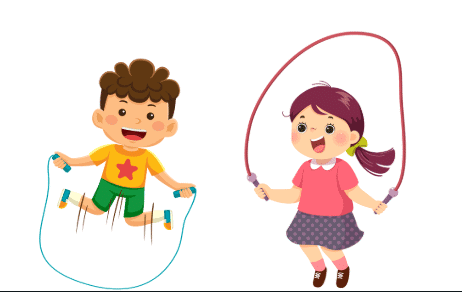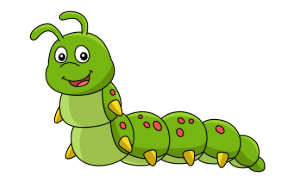Everyday Mathematics: Measurement | Mathematics Olympiad for Class 3 PDF Download
Q1. Ravi wants to measure the length of his pencil using a ruler. The pencil is longer than 5 cm but shorter than 10 cm. Which of these could be the length of his pencil?
(a) 4 cm
(b) 7 cm
(c) 11 cm
(d) 15 cm
Ans: (b) 7 cm
The pencil is longer than 5 cm but shorter than 10 cm. So, the length must be between 5 cm and 10 cm. Among the options, only 7 cm fits this range. 4 cm is too short, and 11 cm and 15 cm are too long.
Q2. Sneha’s desk is 60 cm long. She places two books side by side on it, each 20 cm long. How much of the desk is left uncovered?
(a) 20 cm
(b) 30 cm
(c) 40 cm
(d) 50 cm
Ans: (a) 20 cm
The desk is 60 cm long. Two books, each 20 cm, take up 2 × 20 cm = 40 cm. Subtract this from the desk’s length: 60 cm - 40 cm = 20 cm. So, 20 cm of the desk is left uncovered.
Q3. A ribbon is 25 cm long. If Meena cuts it into 5 equal pieces, how long is each piece?
(a) 3 cm
(b) 5 cm
(c) 8 cm
(d) 10 cm
Ans: (b) 5 cm
To find the length of each piece, divide the total length of the ribbon (25 cm) by the number of pieces (5).
25 cm ÷ 5 = 5 cm.
Each piece is 5 cm long.
Q4. Aman’s toy car is 15 cm long, and his toy train is twice as long. How long is the toy train?
(a) 15 cm
(b) 20 cm
(c) 30 cm
(d) 45 cm
Ans: (c) 30 cm
Twice as long means 2 times the length of the toy car.
The toy car is 15 cm, so 2 × 15 cm = 30 cm.
The toy train is 30 cm long.
Q5. The height of a chair is 80 cm. A stool is 30 cm shorter than the chair. What is the height of the stool?
(a) 40 cm
(b) 50 cm
(c) 60 cm
(d) 70 cm
Ans: (b) 50 cm
The chair is 80 cm tall.
If the stool is 30 cm shorter, subtract 30 cm from 80 cm: 80 cm - 30 cm = 50 cm.
The stool is 50 cm tall.
Q6. A garden path is 3 meters long. How many centimeters is that?
(a) 30 cm
(b) 100 cm
(c) 300 cm
(d) 500 cm
Ans: (c) 300 cm
1 meter equals 100 centimeters.
So, 3 meters is 3 × 100 cm = 300 cm.
The garden path is 300 cm long.
Q7. Priya’s jump rope is 2 meters long, and Raj’s jump rope is 150 cm long. Who has the longer jump rope?
(a) Priya
(b) Raj
(c) Both are the same
(d) Cannot tell
Ans: (a) Priya
1 meter = 100 cm, so 2 meters = 2 × 100 cm = 200 cm.
Priya’s rope is 200 cm, and Raj’s is 150 cm.
Since 200 cm is longer than 150 cm, Priya’s jump rope is longer.
Q8. A box is 40 cm long. If 3 such boxes are placed end to end, what is the total length?
(a) 100 cm
(b) 120 cm
(c) 140 cm
(d) 160 cm
Ans: (b) 120 cm
One box is 40 cm.
For 3 boxes, multiply: 3 × 40 cm = 120 cm.
The total length is 120 cm.
Q9. A caterpillar is 8 cm long. A worm is 5 cm shorter than the caterpillar. How long is the worm?
(a) 3 cm
(b) 4 cm
(c) 5 cm
(d) 13 cm
Ans: (a) 3 cm
The caterpillar is 8 cm. If the worm is 5 cm shorter, subtract 5 cm from 8 cm: 8 cm - 5 cm = 3 cm. The worm is 3 cm long.
Q10. A bookshelf is 1 meter long. How many 25 cm books can fit along its length?
(a) 2
(b) 3
(c) 4
(d) 5
Ans: (c) 4
First, convert the bookshelf’s length to centimeters: 1 meter = 100 cm.
Each book is 25 cm long. Divide the total length by the length of one book: 100 cm ÷ 25 cm = 4.
So, 4 books can fit.
|
36 videos|77 docs|53 tests
|
FAQs on Everyday Mathematics: Measurement - Mathematics Olympiad for Class 3
| 1. What is Class 3 Measurement in education? |  |
| 2. What are some common tools used for measurement in Class 3? |  |
| 3. How can parents help their children with measurement concepts at home? |  |
| 4. Why is learning measurement important for Class 3 students? |  |
| 5. What types of measurement problems might a Class 3 student encounter in exams? |  |
















